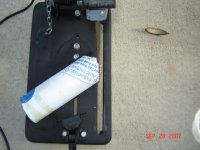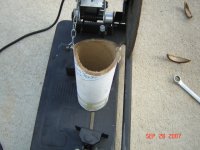patrick_g
Elite Member
So long as the sacrificial anode is the least noble metal in the system(look at the electromotive serioes which lists the metals in order of potential) you will get some protection. Zinc works good for bronze, brass, steel, stainless, and a host of others.
Aluminum anode will not protect aluminum. You have to go further in the electromotive series with your selection to protect aluminum. If you aren't careful, aluminum or magnesium (or an alloy of both) can act as an anode to "protect" your iron and steel.
Dissimilar metal (AKA electrolytic) corrosion only requires two dissimilar metals to touch and be wetted by an electrolyte (such as water based radiator coolant or whatever.) I have seen aluminum with stainless bolts used to hold crimp on electrical connectors to it where the aluminum mounts were eaten away till the bolts and washers fell through the holes. This was where the unit was exposed to marine air (some salt content.) The crimp connectors often get eaten off first if they aren't burried in good silicone or similar.
Pat
Aluminum anode will not protect aluminum. You have to go further in the electromotive series with your selection to protect aluminum. If you aren't careful, aluminum or magnesium (or an alloy of both) can act as an anode to "protect" your iron and steel.
Dissimilar metal (AKA electrolytic) corrosion only requires two dissimilar metals to touch and be wetted by an electrolyte (such as water based radiator coolant or whatever.) I have seen aluminum with stainless bolts used to hold crimp on electrical connectors to it where the aluminum mounts were eaten away till the bolts and washers fell through the holes. This was where the unit was exposed to marine air (some salt content.) The crimp connectors often get eaten off first if they aren't burried in good silicone or similar.
Pat


